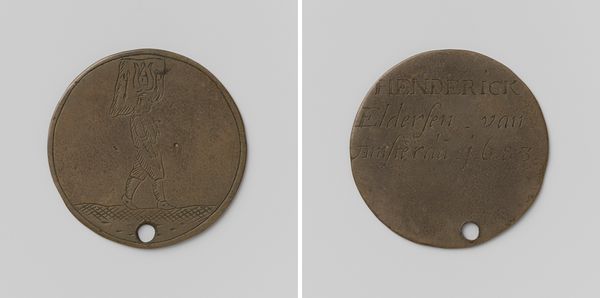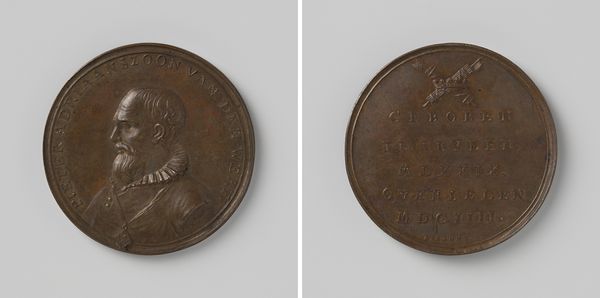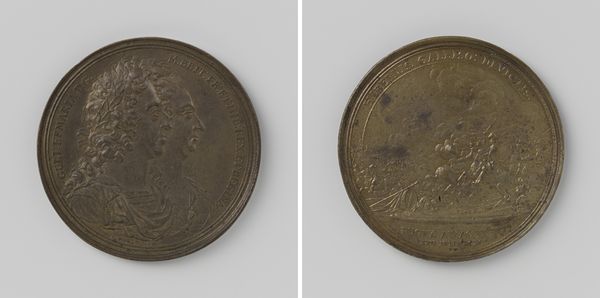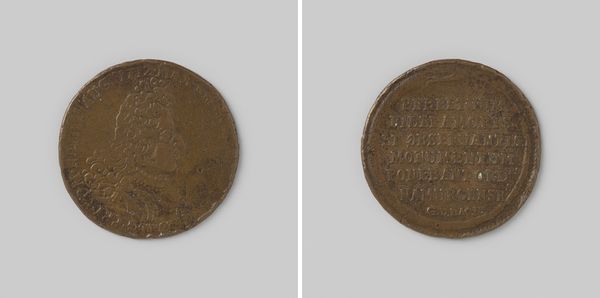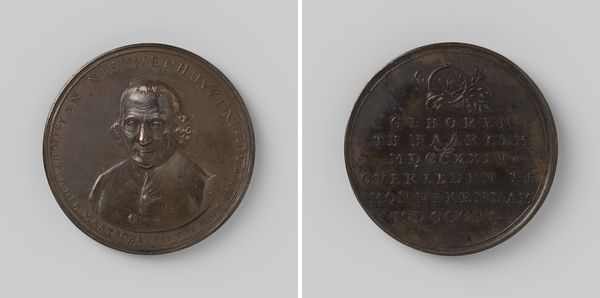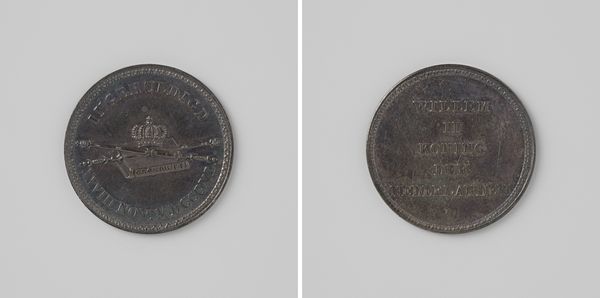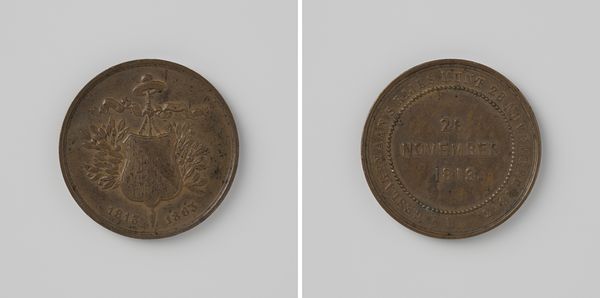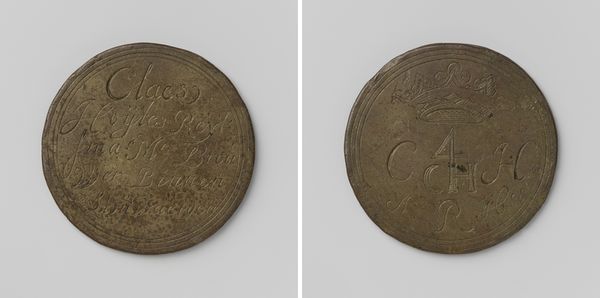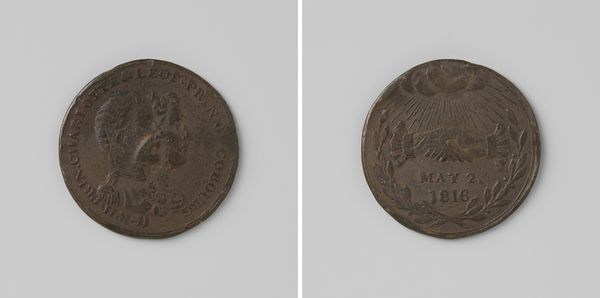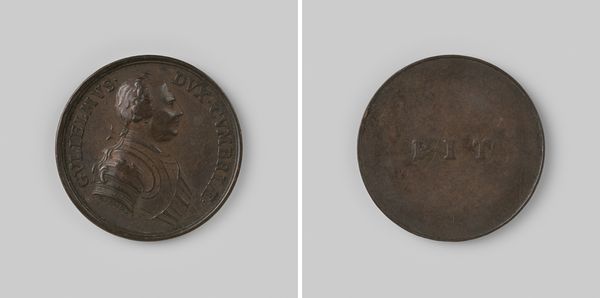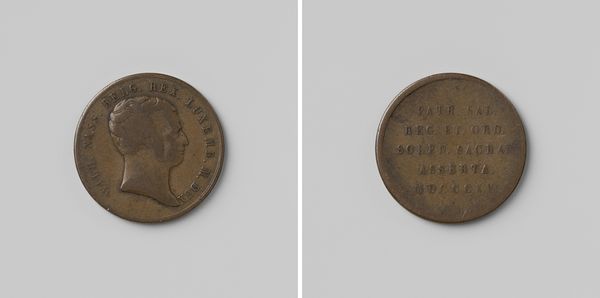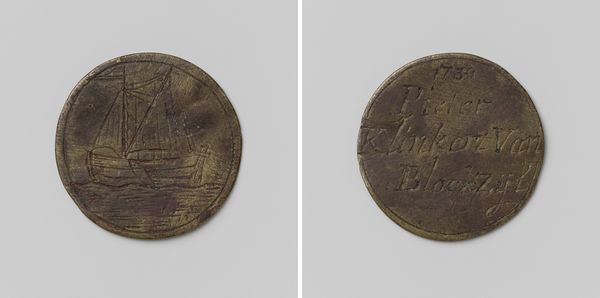
Slag bij Waterloo, ter ere van Willem Frederik George Lodewijk, erfprins der Nederlanden 1815
0:00
0:00
anonymous
Rijksmuseum
print, metal, relief
#
portrait
#
neoclacissism
# print
#
metal
#
relief
#
history-painting
Dimensions: diameter 2.5 cm, weight 4.40 gr
Copyright: Rijks Museum: Open Domain
Curator: Oh, this is rather intriguing. It reminds me of a small, potent dream. A pocket-sized echo of a monumental past. Editor: Yes, it's remarkable, especially when you consider it. Here we have an 1815 commemorative medal now held in the Rijksmuseum, "Slag bij Waterloo, ter ere van Willem Frederik George Lodewijk, erfprins der Nederlanden". It’s a medal struck to commemorate the Battle of Waterloo. Curator: Waterloo! A clash of titans, distilled into this...tiny disc! The weight of history on a...thing you could dangle on a keychain. Irony, perhaps? It looks very unassuming doesn’t it. A rather unassuming celebration. Editor: It’s crafted from metal and presented as a relief print. The front bears an image of William Frederick George Louis, the Prince of Orange. Materially, its existence speaks volumes. Medals like this served not only to commemorate but also to solidify national identity through circulated imagery. We’re seeing history become…portable, touchable, ownable. Curator: I love that you said "portable history." Exactly. Something to be rubbed and worried like a talisman. Did everyone carry one? Or was it just for...those in the know? Like a secret handshake of patriotism. The metal is beautifully muted. Patina, I think it's called. Time's gentle kiss… Editor: Potentially! Mass production was on the rise but wasn't as streamlined as now, so medals might signify wealth and support of those commemorated. But there's also an inherent tension: the glorious battle reduced to this. Almost disposable…But by the late 18th and early 19th centuries, it had become very important. Remember Neoclassicism’s thing was glorifying the antique and a kind of…sanitized idea of what heroic looked like. Curator: Oh, "sanitized," how true. All the blood and mud magically vanish, leaving only the noble profile, the prancing steed. Even the inscription has a…cold formality to it. But even if it wasn't true to how everything truly occurred…it still tells such a wonderful story. That a person was here and it mattered. That to me is incredible. Editor: And the labor involved! From mining the ore, smelting it, die-making to strike these en masse—the medal embeds the historical events of that day within a network of complex, unequal economic relationships. The medal’s inherent symbolism of a Prince and horse could suggest hierarchy and military might as well. This medal tells more stories beyond face value of Dutch Nationalism. Curator: Ah, yes, you’ve returned it to the Earth and to labour from which it came! Thank you for taking my little dream object and anchoring it to the tangible, and slightly messy reality of the world. Editor: The dream is wonderful but matter, no less. I am satisfied with that, and the medal too of course. Thank you.
Comments
No comments
Be the first to comment and join the conversation on the ultimate creative platform.
